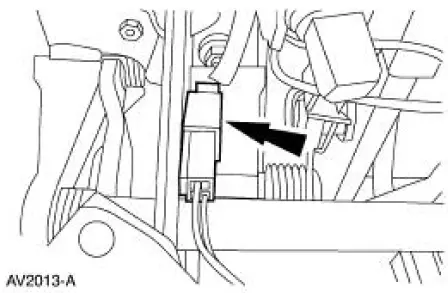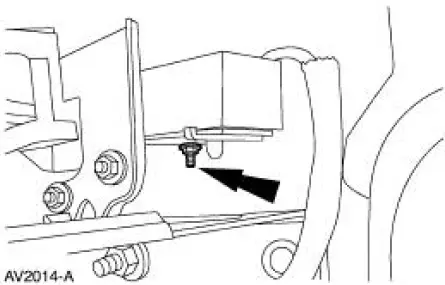Ford Mustang (1999-2004) Service Manual: Clutch Pedal Position (CPP) Switch
Removal
1. Disconnect the battery ground cable. For additional information, refer to Section.
2. Disconnect the connector.

3. Remove the bolt and the clutch pedal position (CPP) switch.

Installation
1. To install, reverse the removal procedure.
 Catalyst Monitor Sensor
Catalyst Monitor Sensor
Special Tool(s)
Socket, Exhaust Gas Oxygen
Sensor
303-476 (T94P-9472-A)
Material
Item
Specification
Penetrating and Lock Lubricant
or equivalent
E8AZ-19A501-
B
...
 Fuel Pressure Sensor
Fuel Pressure Sensor
Material
Item
Specification
Super Premium SAE 5W-20
Motor Oil
XO-5W20-DSP or equivalent
WSS-M2C914-
A
Removal
WARNING: Do not smoke or carry lighted tobacco or open flame of ...
Other materials:
Sensor Indicator - Rear
Special Tool(s)
Pinion Bearing Cone Remover
205-D002 (D79P-4621A)
Axle Bearing/Seal Plate
205-090 (T75L-1165-B)
Sensing Ring Replacer
206-041 (T89P-20202-A)
Removal
1. Remove the rear axle shaft bearing.
2. Using the special ...
Automatic transmission
WARNING: Always set the parking brake fully and make sure
the gearshift is latched in position P. Turn the ignition off and
remove the key whenever you leave your vehicle.
Your vehicle has been designed to improve fuel economy by reducing
fuel usage while coas ...
Fluid Pan, Gasket and Filter
Material
Item
Specification
MERCON V Automatic
Transmission Fluid
XT-5-QM, XT-5-DM
MERCON V
1. Normal maintenance requires periodic automatic transmission fluid changes.
If a major repair,
such as a clutch, band, bearing, etc., is requir ...
